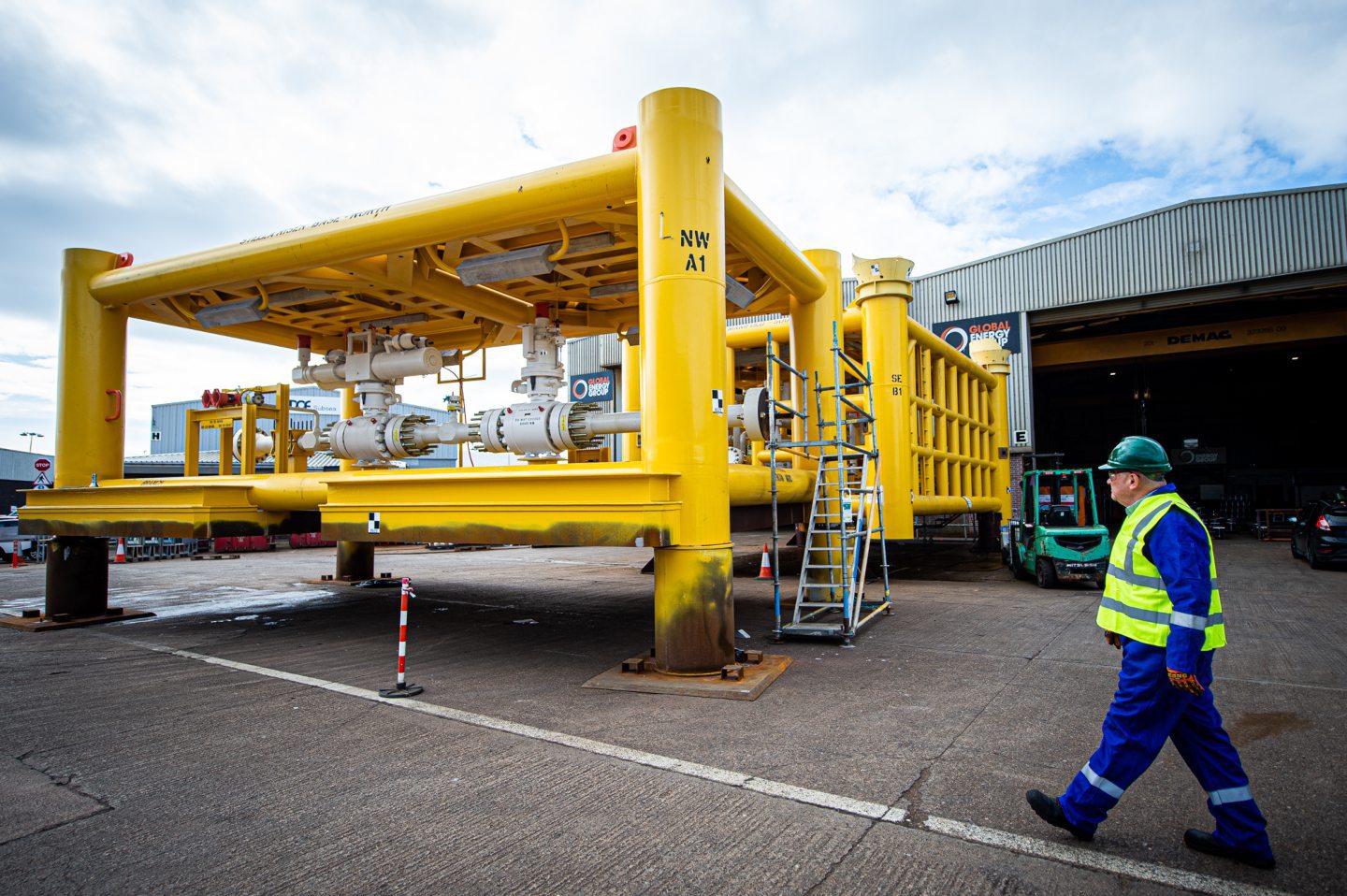
The North Sea Transition Authority (NSTA) is ramping up its ‘carrot and stick’ approach to decommissioning as the regulator prepares to unveil a new TWIST.
The project, short for Tree and Wellhead Information for Subsea Tool (TWIST), is part of the oil and gas regulator’s three-pronged approach to the North Sea’s well decom backlog.
Alongside TWIST, the NSTA is also spearheading a well plugging and abandonment (P&A) to identify the wells which will be ready for decommissioning between 2026 and 2030, as well as the supply chain’s capacity to undertake the required work.
The planning tools are part of the NSTA’s ‘good cop, bad cop’ approach, with the regulator simultaneously vowing to crack down on operators not meeting their P&A obligations.
Earlier this year, the NSTA warned operators risked fines of up to a million pounds if they failed to decommission wells in line with approved plans.
Meanwhile, the regulator’s disputes and sanctions team opened four separate investigations into alleged failures.
In the weeks since, the NSTA has also launched a consultation with the industry on whether it should ‘name and shame’ operators that miss their deadlines.
According to the NSTA, operators spent around £2bn on decommissioning in 2023, in line with forecasts, but they completed much less work than originally planned.
Across the UK continental shelf (UKCS), operators completed around 70% of planned well-decommissioning activities.
TWIST potentially a ‘world first’
But speaking to Energy Voice, NSTA supply chain and decommissioning director Pauline Innes said the regulator hopes the new tools will lead to improved outcomes in the sector.
“We have been working over the summer with four operators to gather information on the well head systems that they use for the subsea wells and Christmas trees that they’ve got,” Innes said.
“We’re planning to launch [TWIST] this year and we’ll make that information publicly available.”
While Innes admitted the initiative “sounds dull”, she described it as potentially a world first initiative and an area of incremental gain that could be “transformative” for the sector.
“What’s happened in the oil and gas industry, as wells have been drilled over the different generations, [is that] different wellhead systems and Christmas trees are being used by different manufacturers,” Innes said.
“Over the years, those manufacturers have been bought by alternative companies, and at the point that you’re now decommissioning or dealing with an old well, the place that you have to start is to know what you’ve got.
“If you know what you’ve got, you can put the right tool to use to then decommission it.”
Subsea decom equipment
Navigating different wellhead requirements is a complicated process for operators and the supply chain, Innes said, with a lack of correct equipment leading to delays.
The data made available by TWIST, which will cover around one third of UKCS subsea wells in its pilot phase, will allow firms to assess their own needs and that of other operators.
Meanwhile, supply chain firms will be able to better identify tools often “sitting in yards that they didn’t know they needed”, Innes said, making better use of existing equipment.
“The supply chain will also get sight of the volume of different wellheads there are, and we suspect that they might look to develop some new technology or manufacture new tooling to do the removal process,” Innes added.
Improving decom collaboration
Overall, improving collaboration in the sector is a primary goal for the regulator.
Currently, North Sea operators take a more “piecemeal” approach to decommissioning, Innes said, something she hopes the TWIST rollout may change.
“Our industry hasn’t traditionally taken that helicopter view, and that’s the role that [the NSTA] can play,” Innes said.
“[Decommissioning activity] has been piecemeal, and I would say wasteful, and so by making this information available through one data set you remove that waste and inefficiency.”
While UKCS operators have collaborated on decommissioning campaigns in the past, Innes said this has “stuttered a little bit”.
Alongside TWIST, the NSTA has also commissioned a forward-looking analysis covering a five-year plan for well P&A.
Involving PDi, Hogarth Energy, Zenith Energy and Empirisys, the project will identify which UKCS well bores will be ready for decommissioning between 2026 and 2030.
It will also assess what supply chain capacity and capability will be required to decommission the well set, and a reasonable timeframe for delivering the work scope.
“What we’re hoping is by standing back and looking at the whole market for five years, we’ll be able to identify campaign opportunities and enable the supply chain and the operating community to deliver them,” Innes said.
“There’s definitely more scope to deliver improvement in the campaigning in the basin.
“The influencing data part of it should be fundamental for us because that enables operators to see the potential and then with our regulatory tools we can compliment it by holding them to account on the delivery of it.”
Reducing decommissioning costs
Alongside improving efficiency, the NSTA hopes better collaboration will also help to reduce the overall cost of decommissioning the North Sea basin.
In July, the NSTA said it estimates operators will spend approximately £24 billion on decom between 2023 and 2032, an increase of £3bn on its estimate the year prior.
The figure represents more than half of the overall estimate for decommissioning the remaining UKCS oil and gas infrastructure, which stands at approximately £40bn.
The industry has achieved some success at reducing costs in the past, with a 25% reduction in cost estimates between 2017 and 2022, worth around £15bn.
The NSTA says the money operators save on decommissioning costs allows them to invest in new production and emissions reduction projects.
It also reduces the costs of decommissioning tax relief for UK taxpayers.
With well decommissioning set to make up half of the total decom budget on its own, Innes said developing new technologies and improved campaigning are “two elements that will transform cost”.
“Some analysis we did a few years ago suggested it could be in the realm of 25-30% savings just by contracting and having a different relationship between the operating and supply chain community,” Innes said.
“It can make a fundamental difference.”
While Innes said the industry understands the benefits of campaigning, the “complexity that then layers beneath that” is how to enable it.
“Partly that is about culture and contracting models, and that’s something that we engage with and work with industry on,” she said.
“But the bit that’s within our gift is the information and what the size of that prize looks like [for the supply chain].
“Once you see the whole picture, you might take a different approach and that’s what the industry has been telling us this could unlock.”
Frustration rife in decom sector
As the NSTA works to improve project visibility, Innes said the regulator is also conscious of widespread frustration in the North Sea decom sector.
A survey released in May by trade body Decom Mission revealed dissatisfaction in the industry surrounding skills gaps, project execution and regulation.
According to the survey, many respondents expressed a desire for regulatory reform, amid concerns over integrity and accountability and a sense there is a “disproportionate amount of influence by operators on regulators”.
Respondents also felt costs often outweigh environmental outcomes, with the industry falling short of implementing its goals around circularity and repurposing.
In response to these concerns, Innes said the regulator “can never be complacent”.
“There’s always something more you can do to improve the system and the work that we’ve been doing is always to try and address that,” Innes said.
“If the industry is frustrated at the delivery of decommissioning, I’m equally frustrated.”
Recommended for you

 © Supplied by NSTA
© Supplied by NSTA © Supplied by Well-Safe Solutions
© Supplied by Well-Safe Solutions © DC Thomson/ Wullie Marr
© DC Thomson/ Wullie Marr © Supplied by system
© Supplied by system